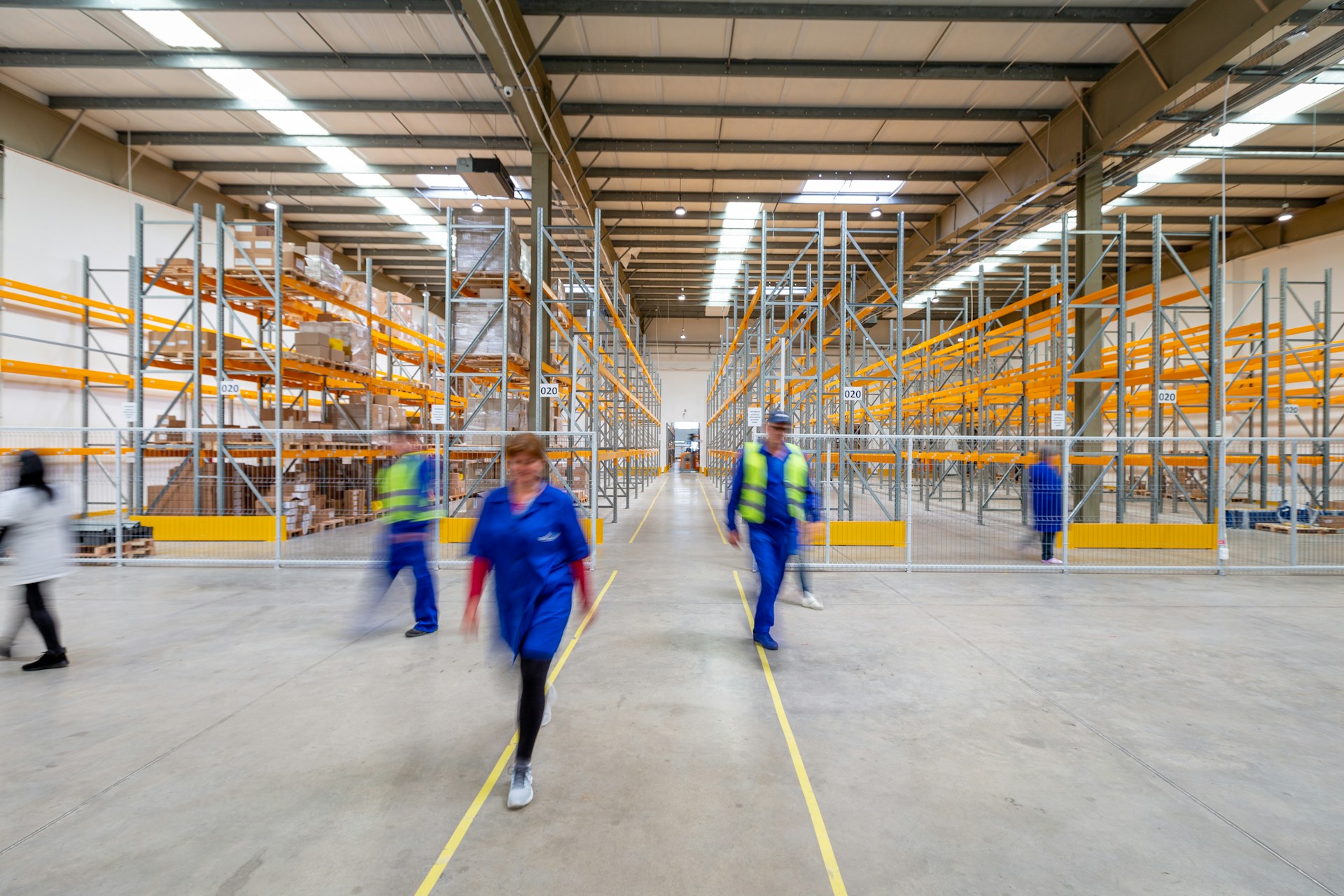Choosing the Right Floor Marking Tape for Your Facility
In manufacturing, industrial, and commercial environments, organization is a must. A well-organized factory or warehouse makes for more efficient processes and, even more crucially, a safer environment for workers. One tool for keeping these spaces organized that shouldn't be overlooked is floor marking tape.
If you run a commercial space, you likely use floor marking tape to guide employees through your spaces and ensure they return dangerous equipment to its proper location. Floor marking tapes are also perfect for marking potentially hazardous spaces in your facility, so employees know to use extra caution when needed. For best results, you need to choose the right type of floor marking tape for your needs. Read on to learn about how to assess and select safety tape.
Why Floor Marking Tape Matters
Workplace safety guidelines set by the Occupational Safety and Health Administration (OSHA) require you to warn workers in industrial spaces about potential hazards. Floor marking tape uses specific colors and patterns to mark walkways, aisles, and hazardous zones. This way, anyone working in the factory can see the tape and maneuver safely through the space, even in places without signage.
Marking your floor also communicates workflows and designates locations of specific workspaces to your employees. For example, you can use separate colors to mark offloading spaces and storage, so your team is always moving inventory to the right location. Clearly representing the most efficient way to move through your workspace, and what each area in the space should be used for, helps your team safely get more done in less time.
Visually organizing high-traffic areas is another way floor marking tape keeps your warehouse running smoothly. For example, marking vehicle lanes keeps forklift operators and other drivers from navigating around people walking through the facility.
Types of Floor Marking Tape
Floor marking tape comes in multiple varieties suitable for different needs, including:
- PVC Tape: This tape is made of high-quality polyvinyl chloride (PVC) material. It's durable and adheres well to concrete, tile, laminate flooring, and other smooth surfaces, making it a good fit for warehouses.
- Vinyl Tape: Vinyl tape is made of PVC, so it offers the same flexibility and durability of PVC tape while also coming in multiple bright colors and patterns. Options such as striped safety warning tape make vinyl tape great for marking hazards and color-coding areas in your facility.
- Reflective Tape: This tape uses prisms and other reflective surfaces to direct light toward your eye. It's often used to mark pathways and other organizational guidelines in low-light areas.
- Glow-in-the-Dark Tape: Not to be confused with reflective tape, glow-in-the-dark tape is photoluminescent. This means it glows in the dark after you expose it to light. In many industrial spaces, it's used to mark emergency exits and pathways so people can navigate the facility or evacuate during a power outage.
- Heavy-Duty Industrial Tape: This type of floor marking tape is thicker than traditional PVC tape, making it better for marking high-traffic areas since it can withstand wear and tear from vehicles. This tape is great for marking areas where forklifts and other vehicles operate.
Key Factors to Consider
Once you've narrowed down your tape needs by function, consider these options to select the right type for you.
Surface Type
Your floor's surface will affect how well floor marking tape sticks to it. Most floor marking tape sticks to smooth, dry surfaces such as concrete and epoxy. You can still use tape on rough or textured floors, but it will likely peel faster than on a smooth surface. Areas with high humidity or frequent cleaning also wear out floor marking tape.
Traffic Volume
Before choosing a floor marking tape, evaluate traffic patterns through the area. Heavy foot traffic, forklifts, and carts cause added strain on your tape. Select heavy-duty tape or high-quality PVC tape in these areas so the markings last.
Environment
When you're planning your warehouse or other industrial space, map out areas where you need floor marking tape. Consider if you need to accommodate outdoor areas, or if parts of your facility are prone to spills or chemical exposure. Frequent exposure to the elements, chemicals, and humidity will wear your floor markings out faster, so look for a product made to withstand these hazards.
Duration
Consider whether you need your tape to be temporary or permanent. Permanent tape works best for certain circumstances, such as when you need to clearly mark pathways and hazards in a warehouse or manufacturing floor to comply with safety regulations. Temporary tape is most applicable when you need removable floor markings for moves and special events.
Adhesive Strength Vs. Removability
If you're marking up a floor for daily use, look for industrial tape with heavy-duty adhesive that will stay in place for the long haul. If you're marking up the floor temporarily, look for an adhesive that's sticky but also easy to remove without leaving a residue behind.
Color Standards and Compliance
OSHA and the American National Standards Institute (ANSI) have set guidelines for color-coding your warehouse or other industrial space. Following a set standard makes it easy for anyone who starts working for you to understand how the space is marked.
Under OSHA standards, red tape identifies fire protection equipment, emergency stop devices, and any areas in which you're storing hazardous materials. Yellow signifies physical obstacles. ANSI expands the guidelines to include:
- Blue: important information
- Green: Workplace safety information or medical equipment such as first aid kits or eye wash stations
- Orange: Areas in which moving vehicles operate
- Black/Yellow: Areas that contain potential health hazards, such as chemical storage
Industry standards involve marking pathways, hazardous areas, emergency exits, escape routes, workstations, equipment, storage areas, and safety signage.
Mistakes to Avoid
Avoiding common mistakes when selecting and placing your floor marking tape will save you from having to pull it up and reset it later. Start by making sure you have the right adhesive strength, grade, and durability. Pay attention to any applicable temperature shifts, cleaning schedules, and weather conditions in the areas you need to mark up. When marking high-traffic areas that are cleaned more often, you may need a heavier tape. Look for tape that is long-lasting, made for permanent floor marking, and can withstand the conditions of the area you're applying it to.
Before placing your tape, be sure to prepare your surfaces to help the tape stick better. Floor marking tape adheres best to clean, dry surfaces. Taking time to prep the floor will make your tape last longer.
Product Spotlight: Tape Jungle Picks
Tape Jungle offers different types of floor marking tape that is made to withstand daily use. We recommend the following options for your industrial space:
- Reflective Tape: All our reflective tape options are commercial grade and made to withstand high traffic. We offer indoor and outdoor varieties in OSHA and ANSI recommended colors.
- Colored Vinyl: From laminated safety tape to industrial-grade colored vinyl tape, we offer versatile sun- and water-resistant products perfect for multiple applications, from marking up floors to protecting electrical cords.
- Heavy-Duty Industrial Tape: For high-traffic spaces and areas where you're running vehicles, we offer heavy-duty vinyl floor tape with a strong rubber-based adhesive. It's easy to stick and peel with no dry time or harsh fumes.
Don't see what you need here? Browse Tape Jungle's floor marking solutions.
Make Your Commercial Space Safer
In many commercial, manufacturing, and industrial spaces, floor marking tape isn't a want, it's a requirement. It's important to pick the right floor marking tape for the job. Understanding the factors that affect the tape you need, such as OSHA and ANSI color-coding guidelines, the material and texture of your facility's floor, and the traffic patterns of vehicles in your space will help you pick the right product.
Once you've clearly marked up your commercial space, your employees will be safer. They'll be able to identify and avoid risks and move through the facility effectively. Start transforming your commercial space into the picture of safety and efficiency today by considering high-quality floor marking tape options, such as those offered by Tape Jungle.
Need help deciding which tape will best suit your needs? Contact Tape Jungle today, and our expert team will help you find the right tape for your warehouse's conditions.


 Default Currency
Default Currency
